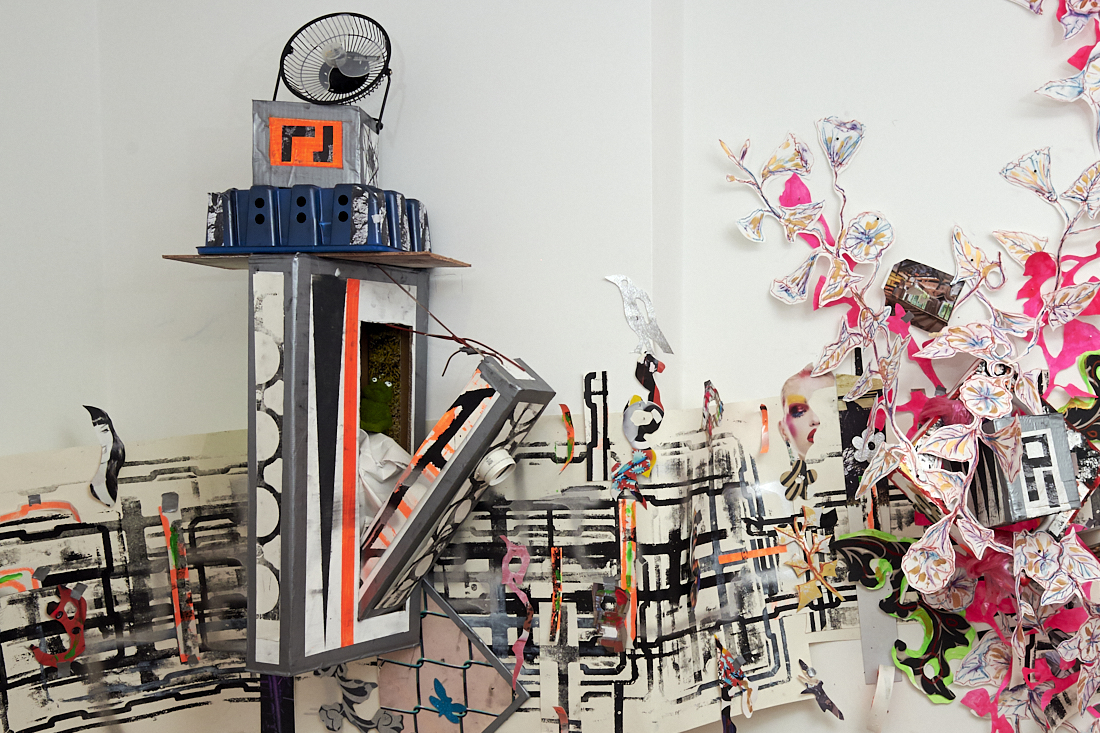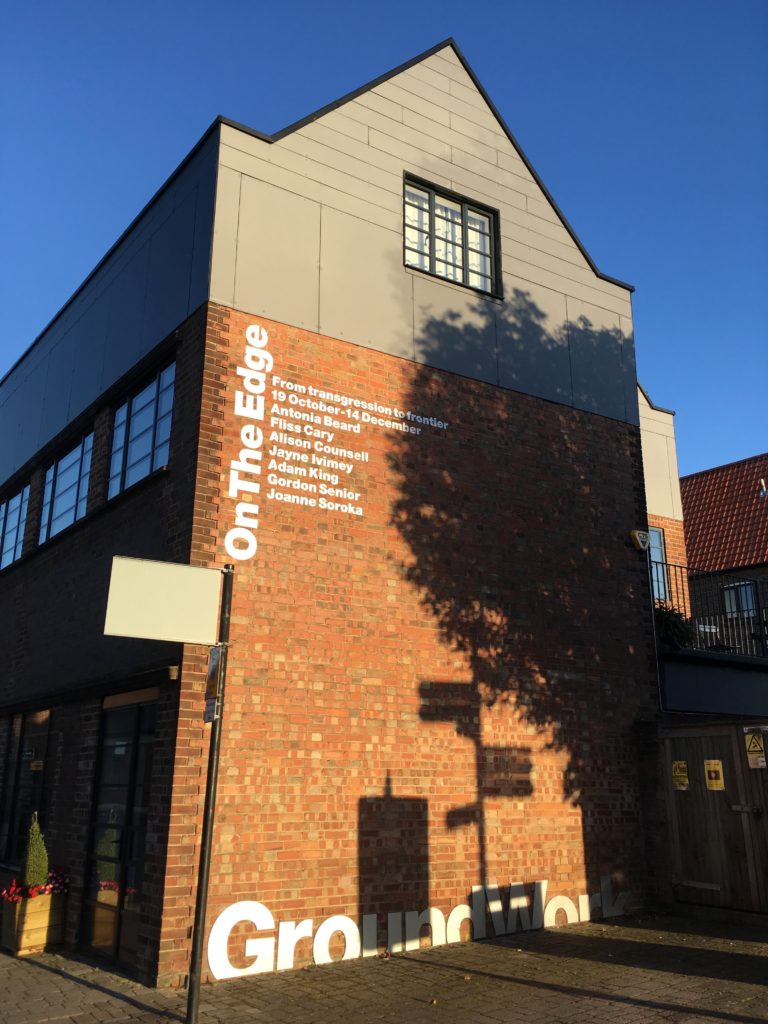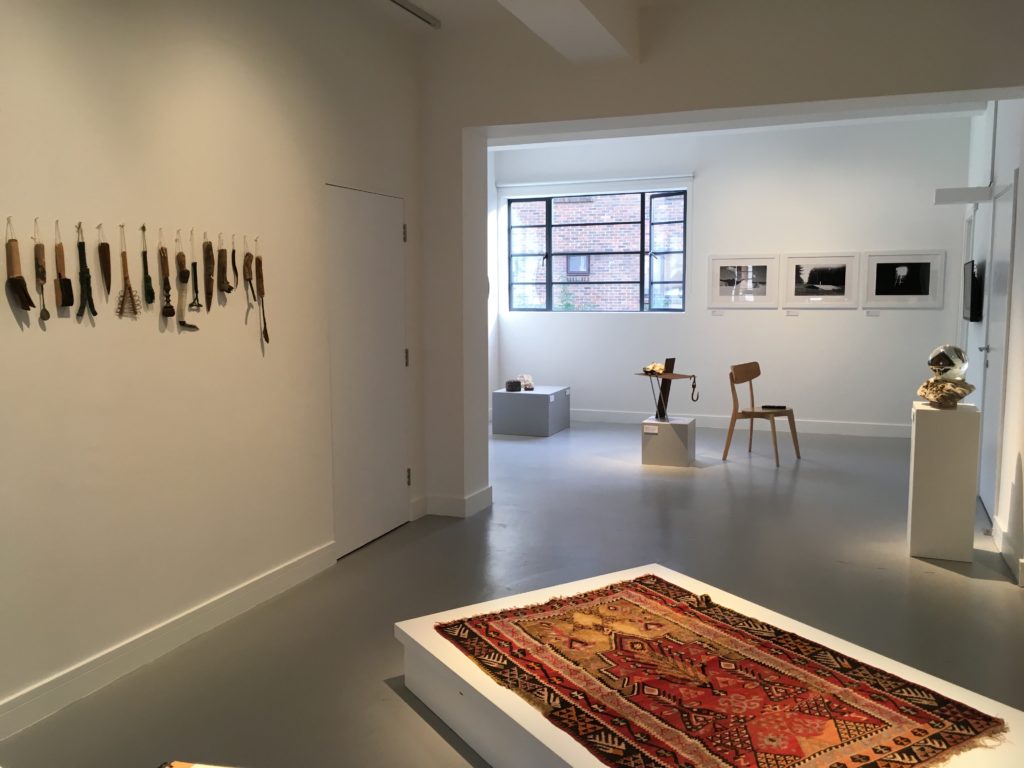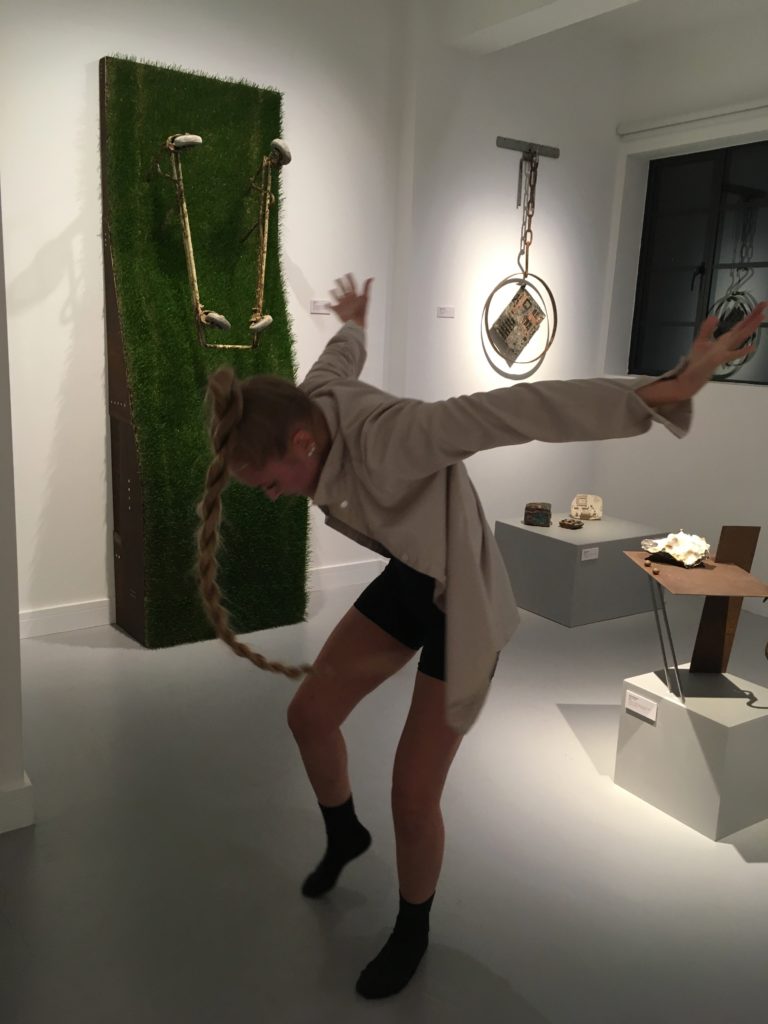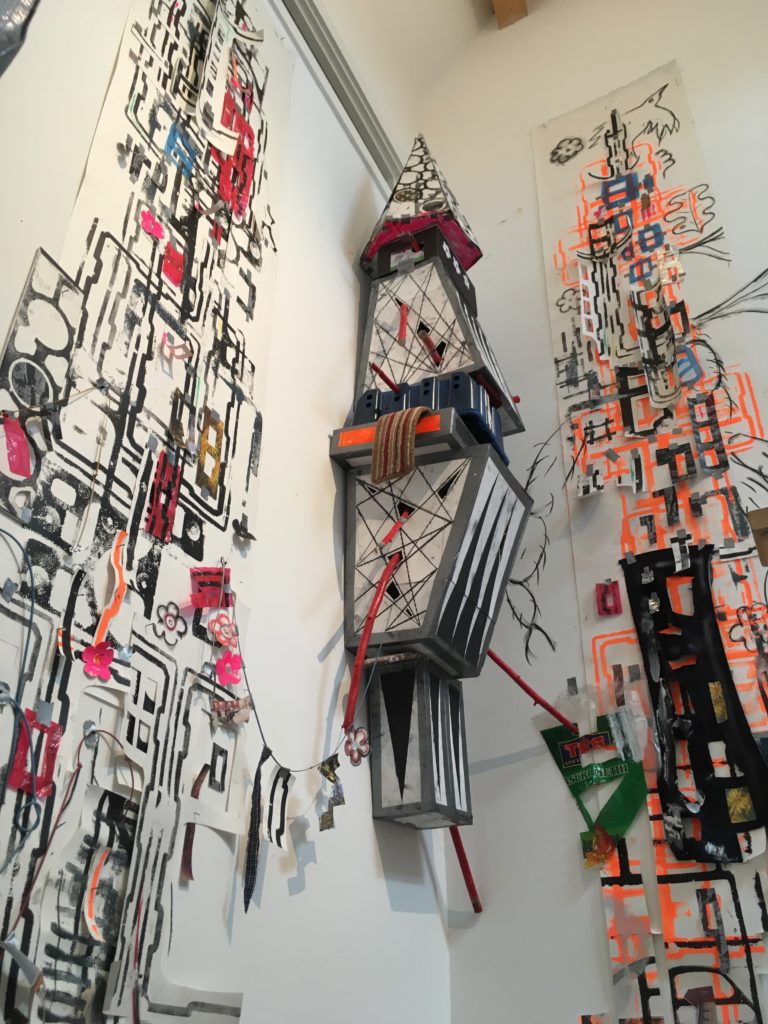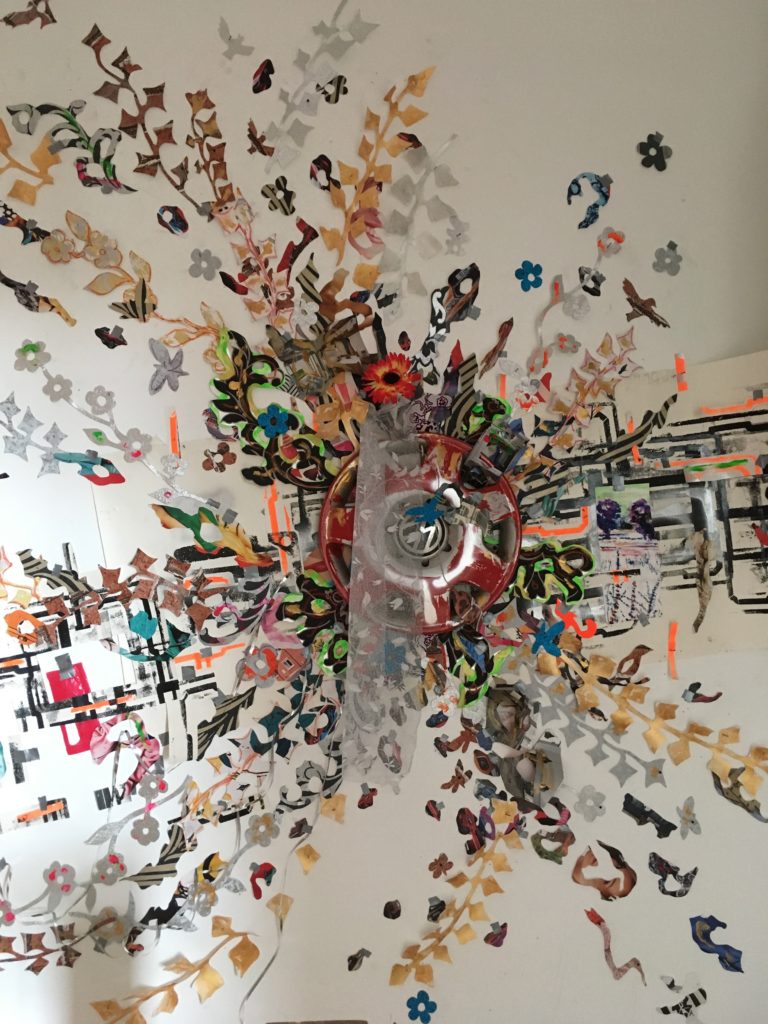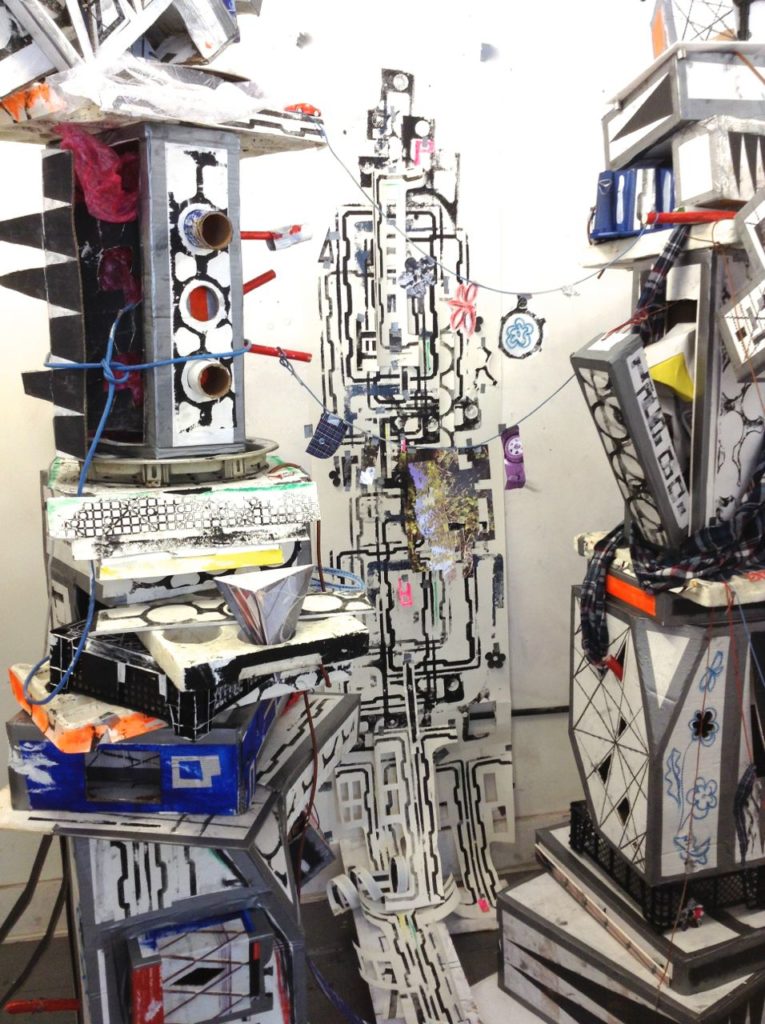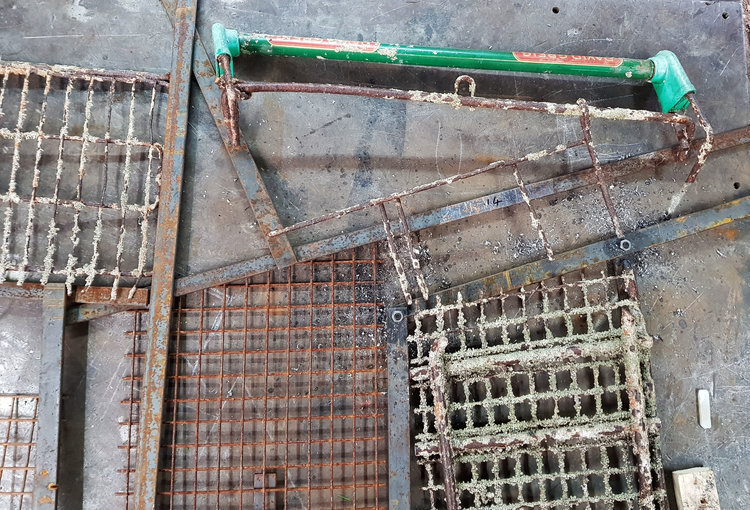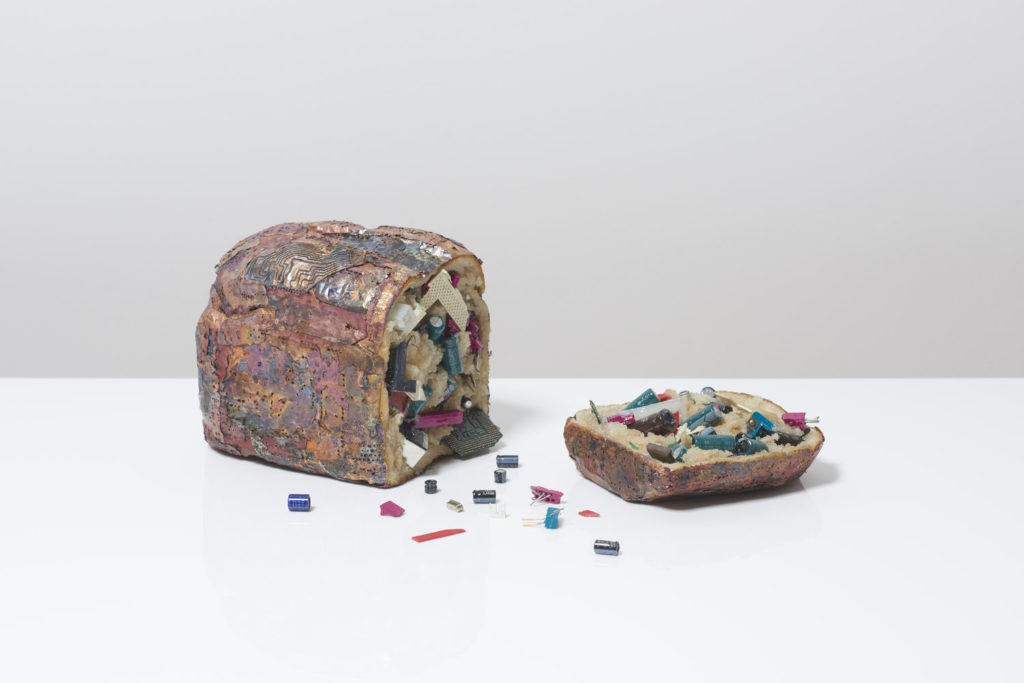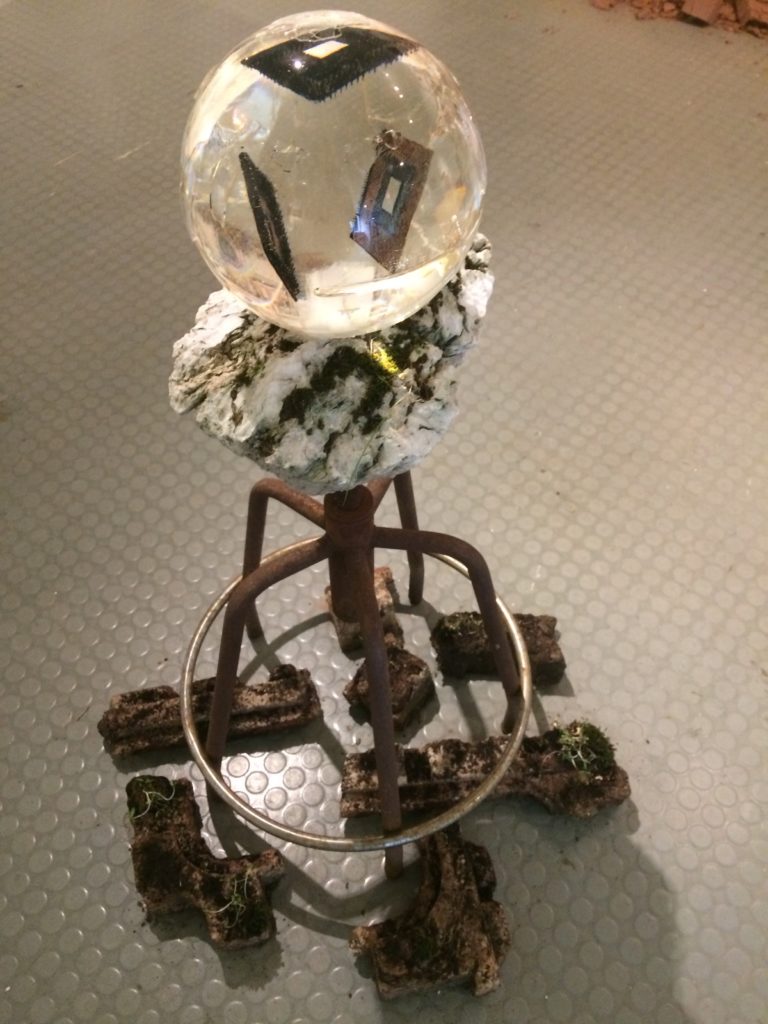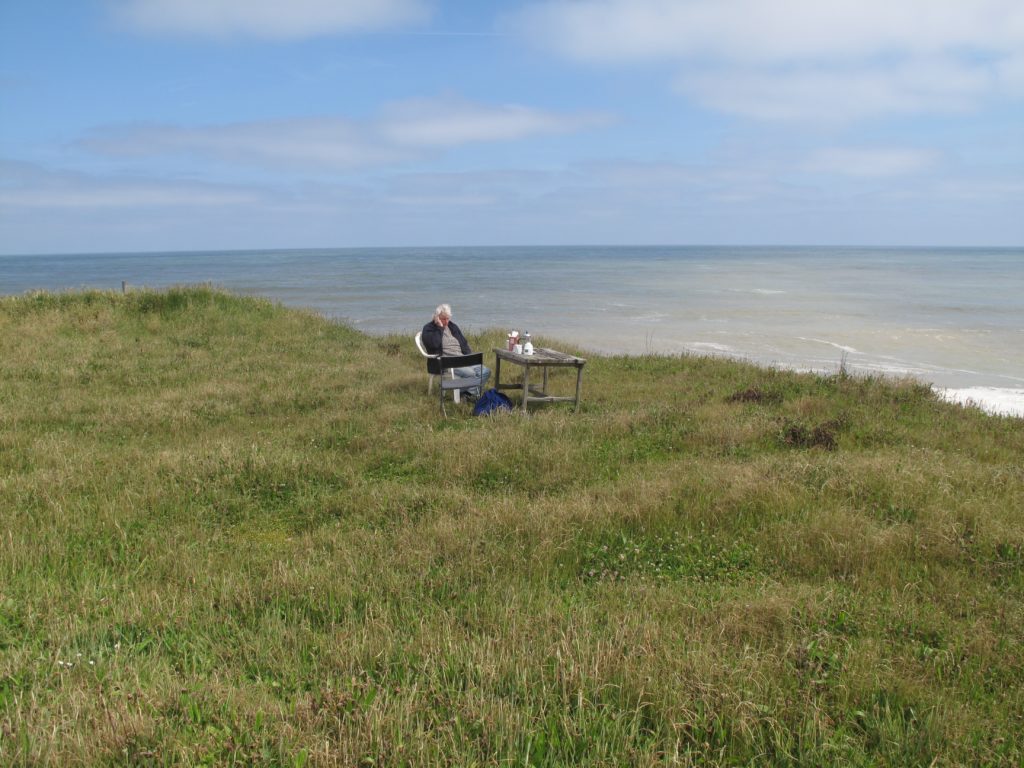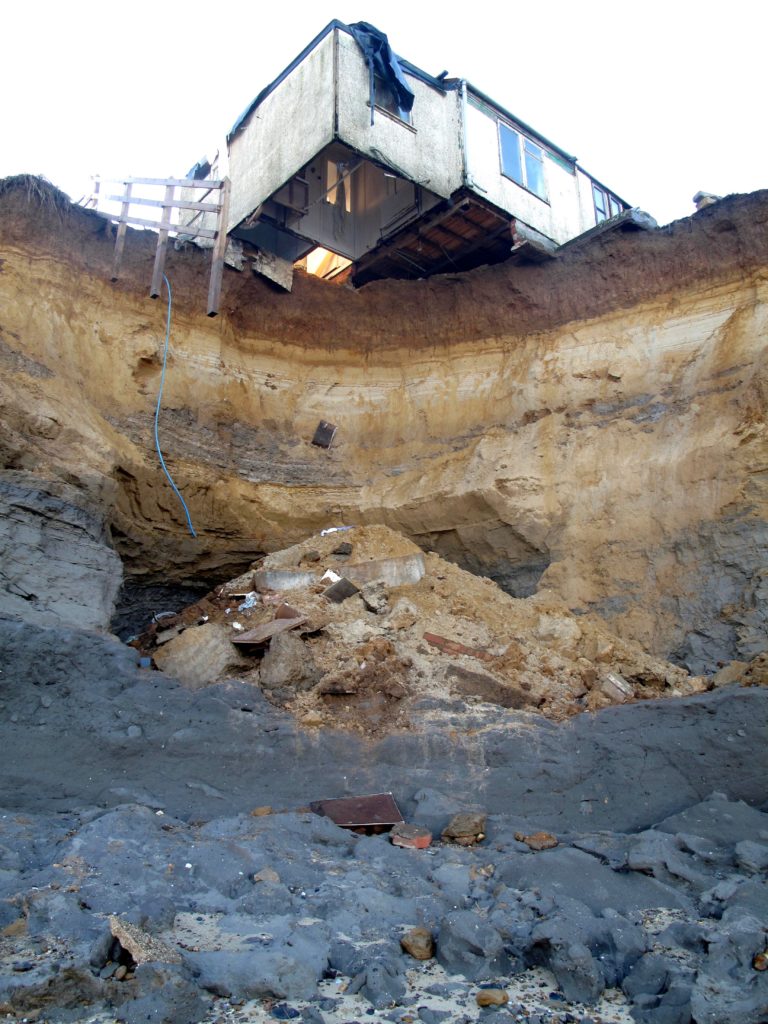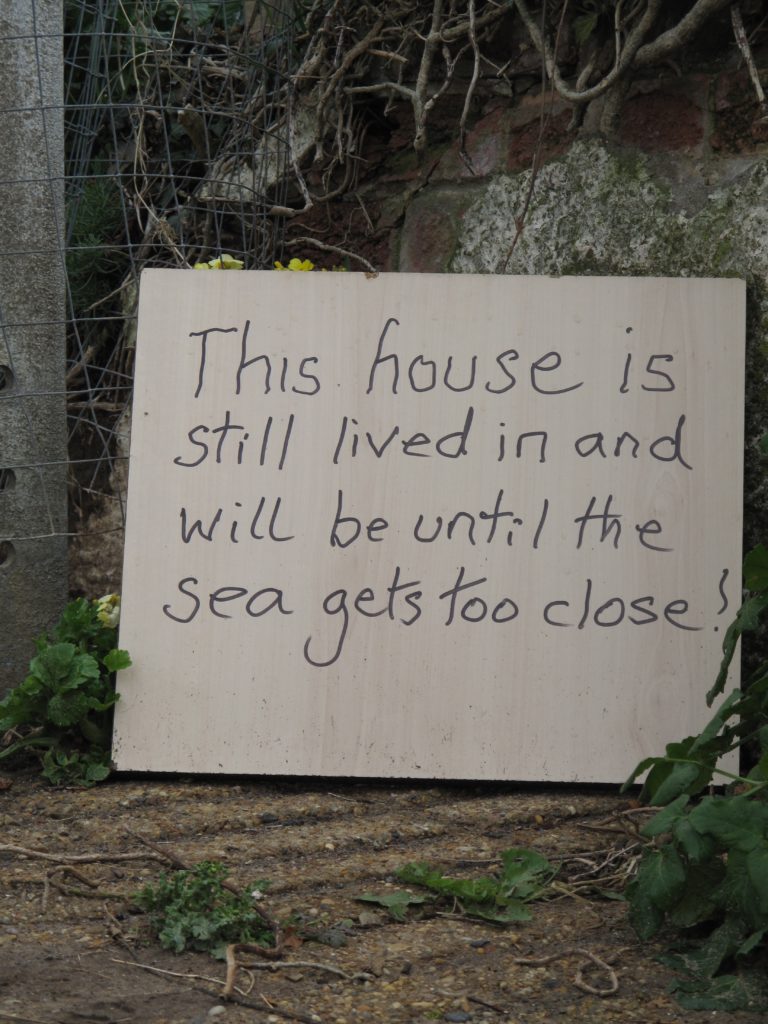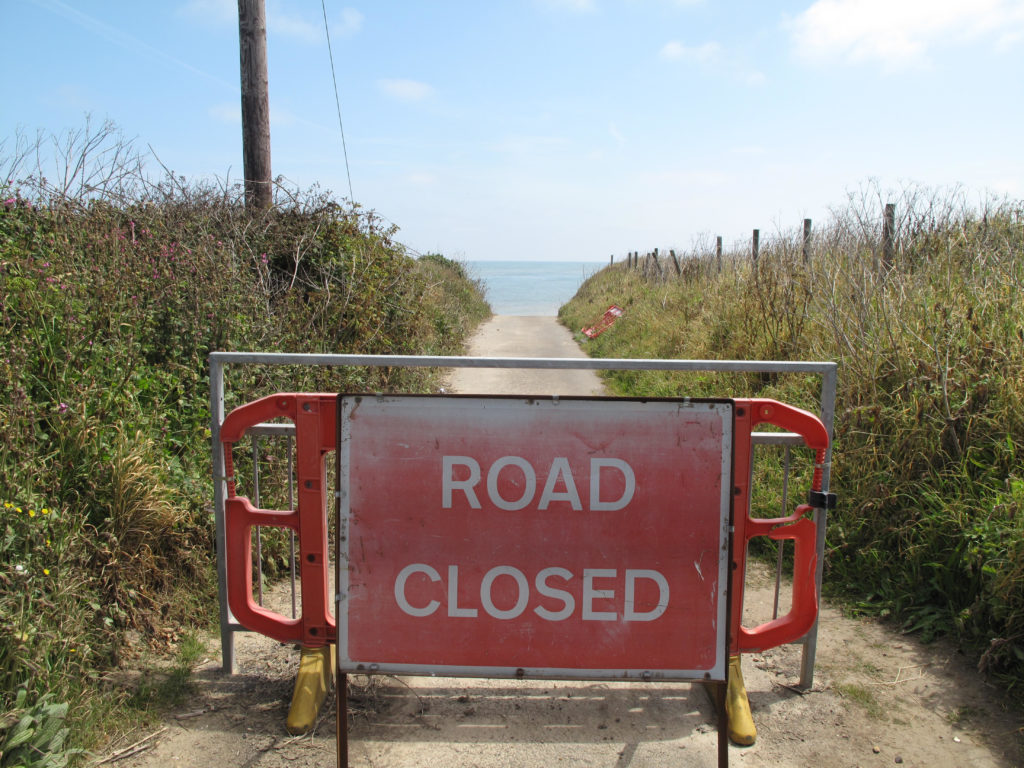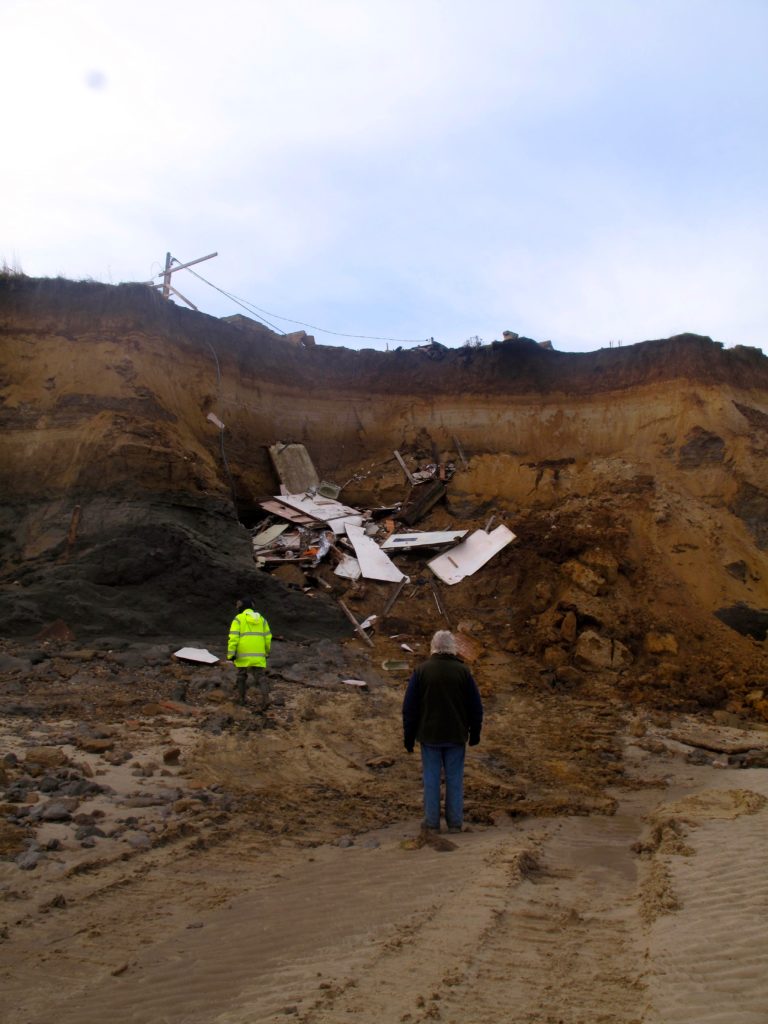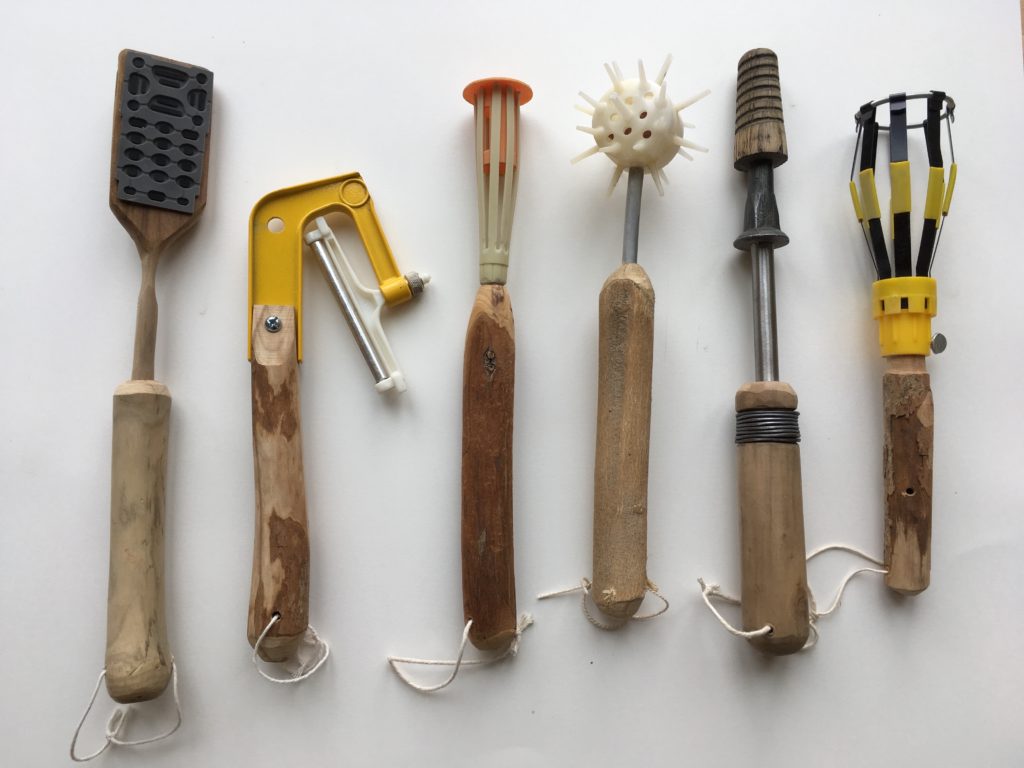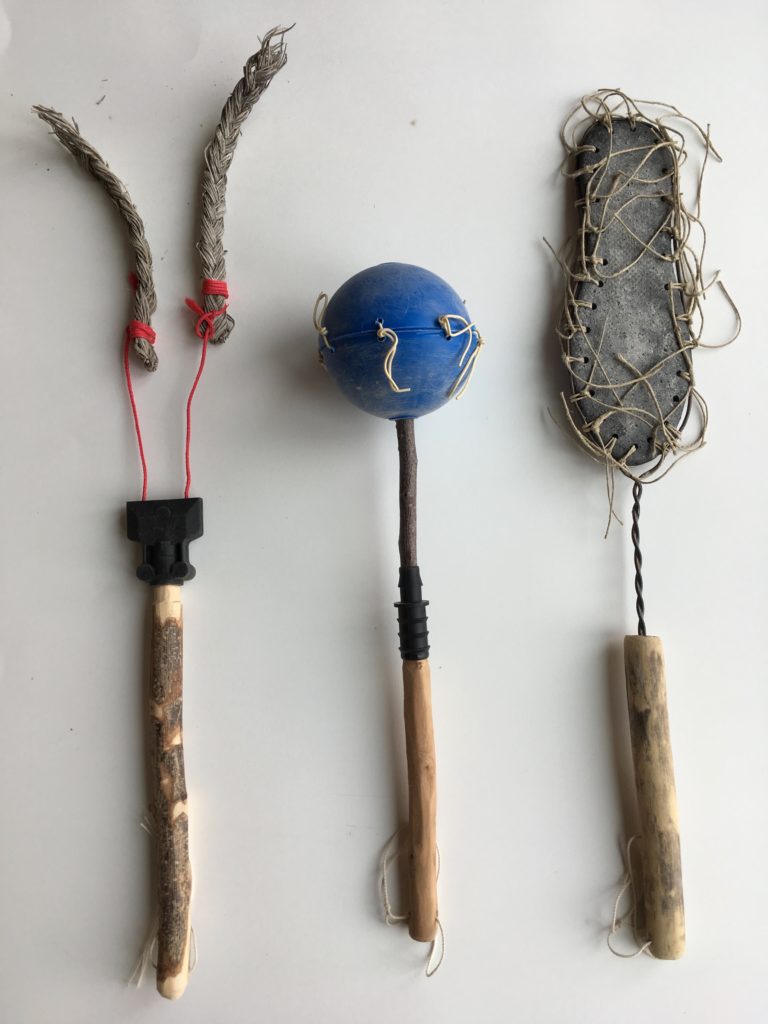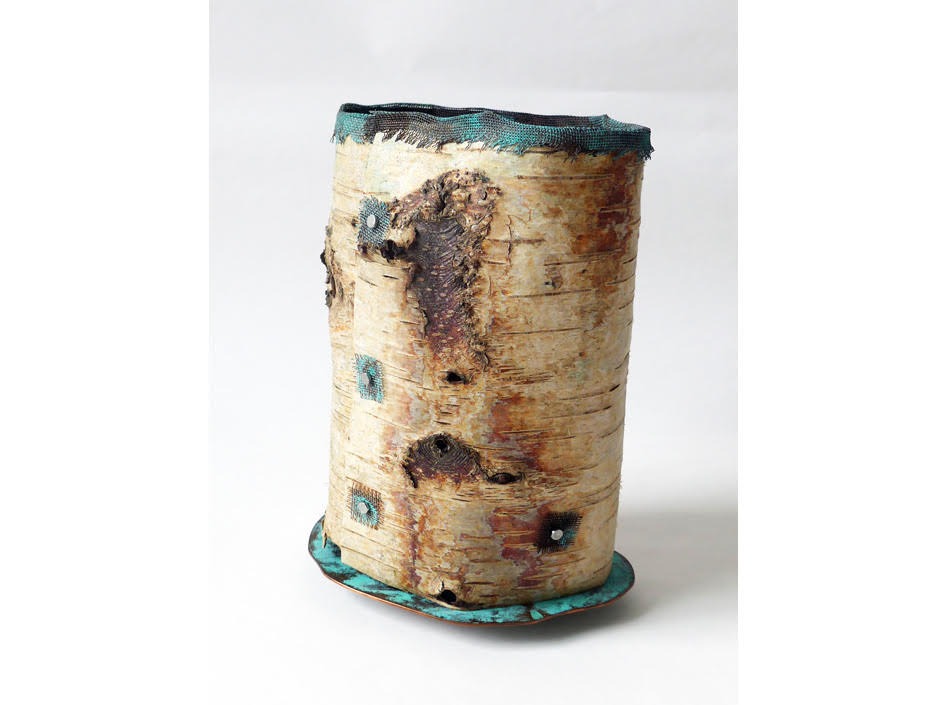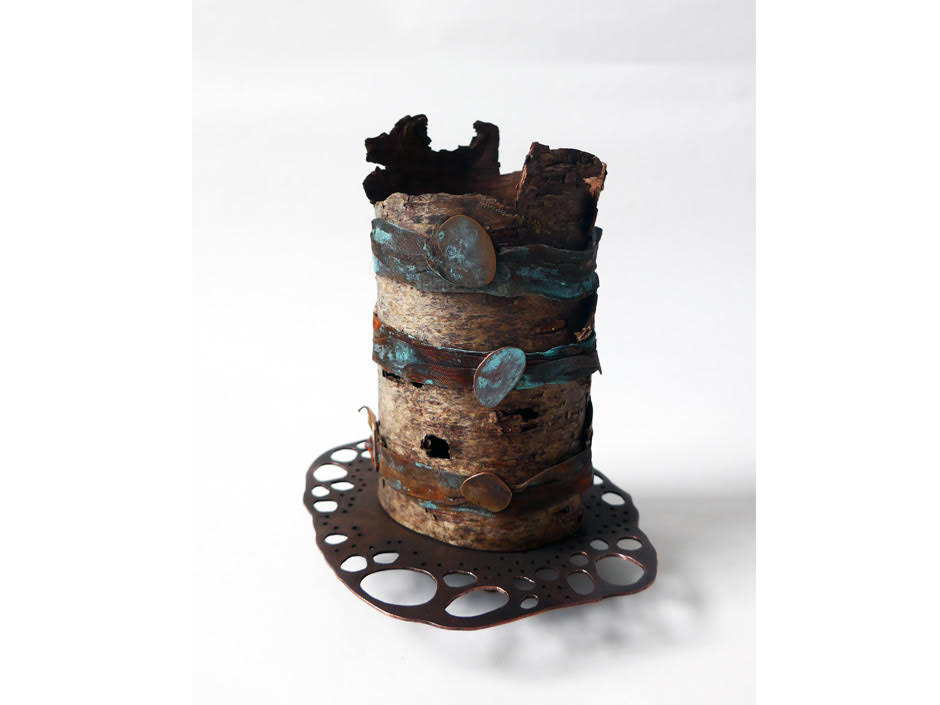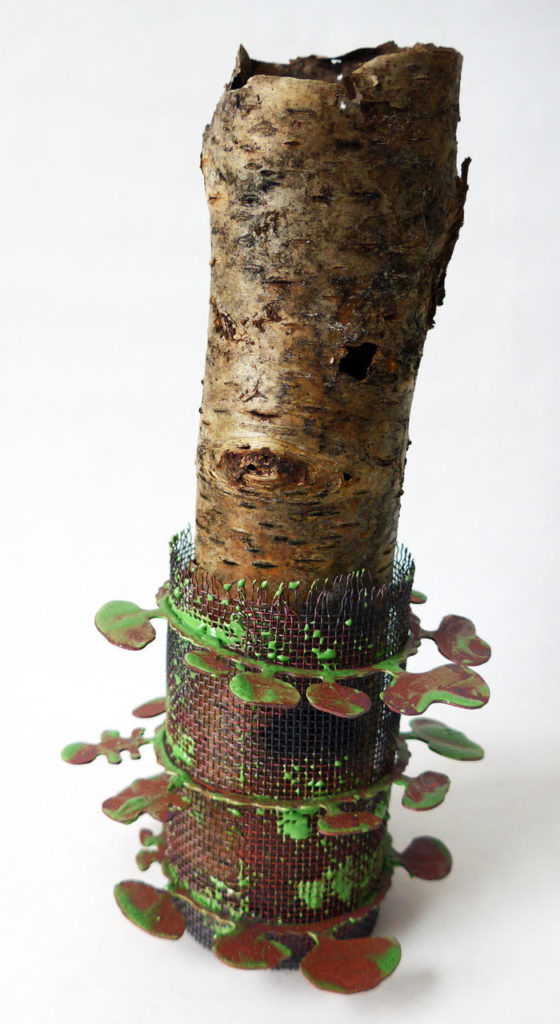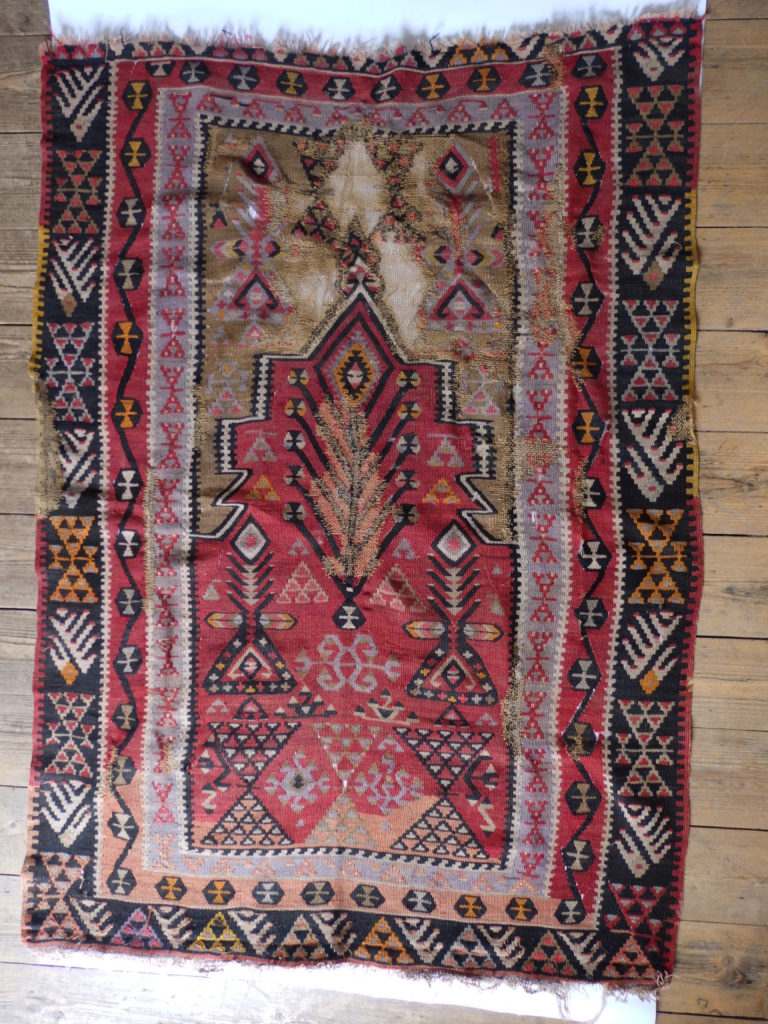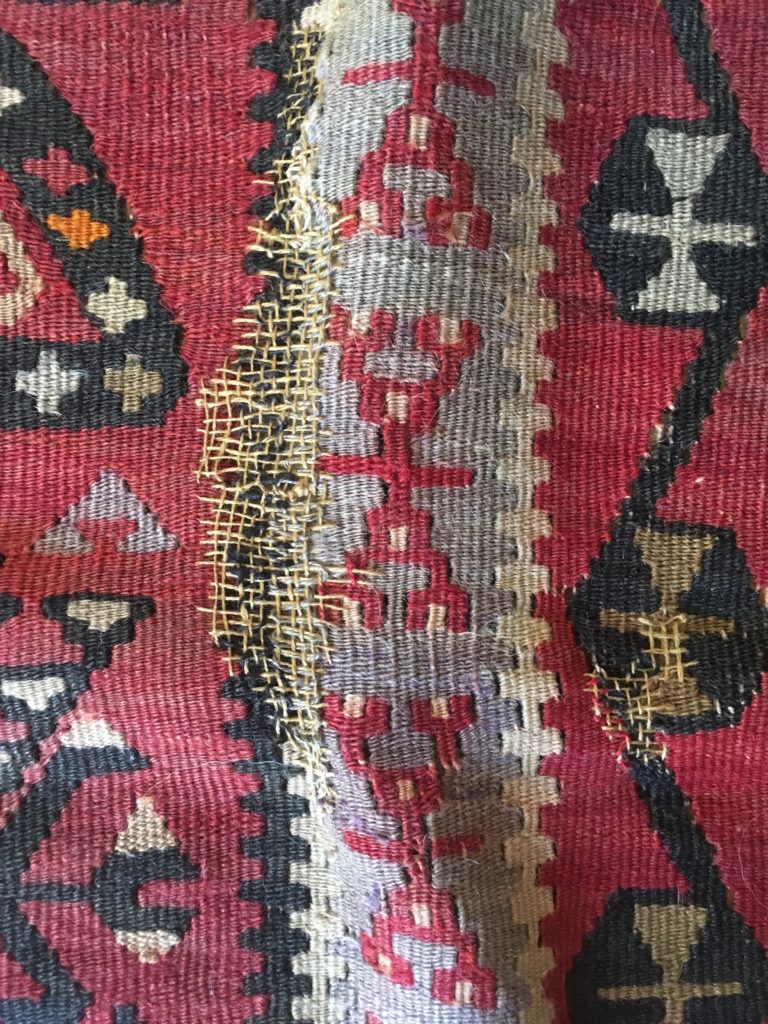19 October – 14 December 2019
This exhibition played on numerous interpretations of edge-potential and edge-confusion. Some was literal, some was metaphorical. The idea was both to question the way we create boundaries and divisions. Also to reflect critically on the way one environment or culture can seep into another. Does the edge create problems, or opportunities?
GroundWork Gallery specialises in making connections between contemporary art and our changing environment. From its small industrial building, situated on the banks of 2 rivers, it explored the environment and culture of the edge at the end of 2019.
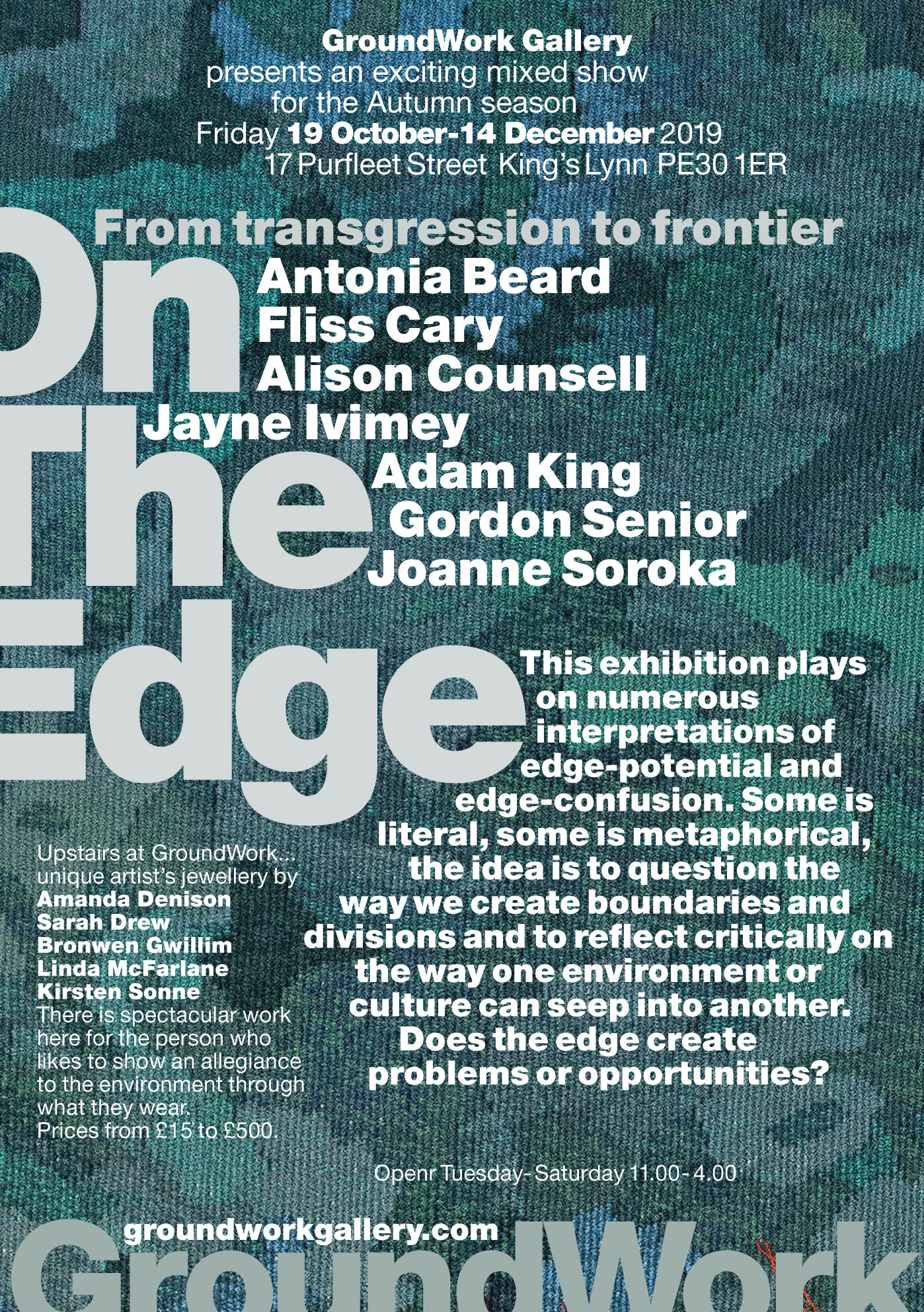
Being edgy is to be at a frontier, at the avant-garde. Edges can also be confusingly mixed, places of danger, or places of opportunity. Edges can be fascinating as places where ecosystems collide. In the environment, edge-landscapes, for example by fields or forests, can be rich with diverse species. Whereas edges of towns can be pleasantly green, or marred by ugly sprawl.
Adam King
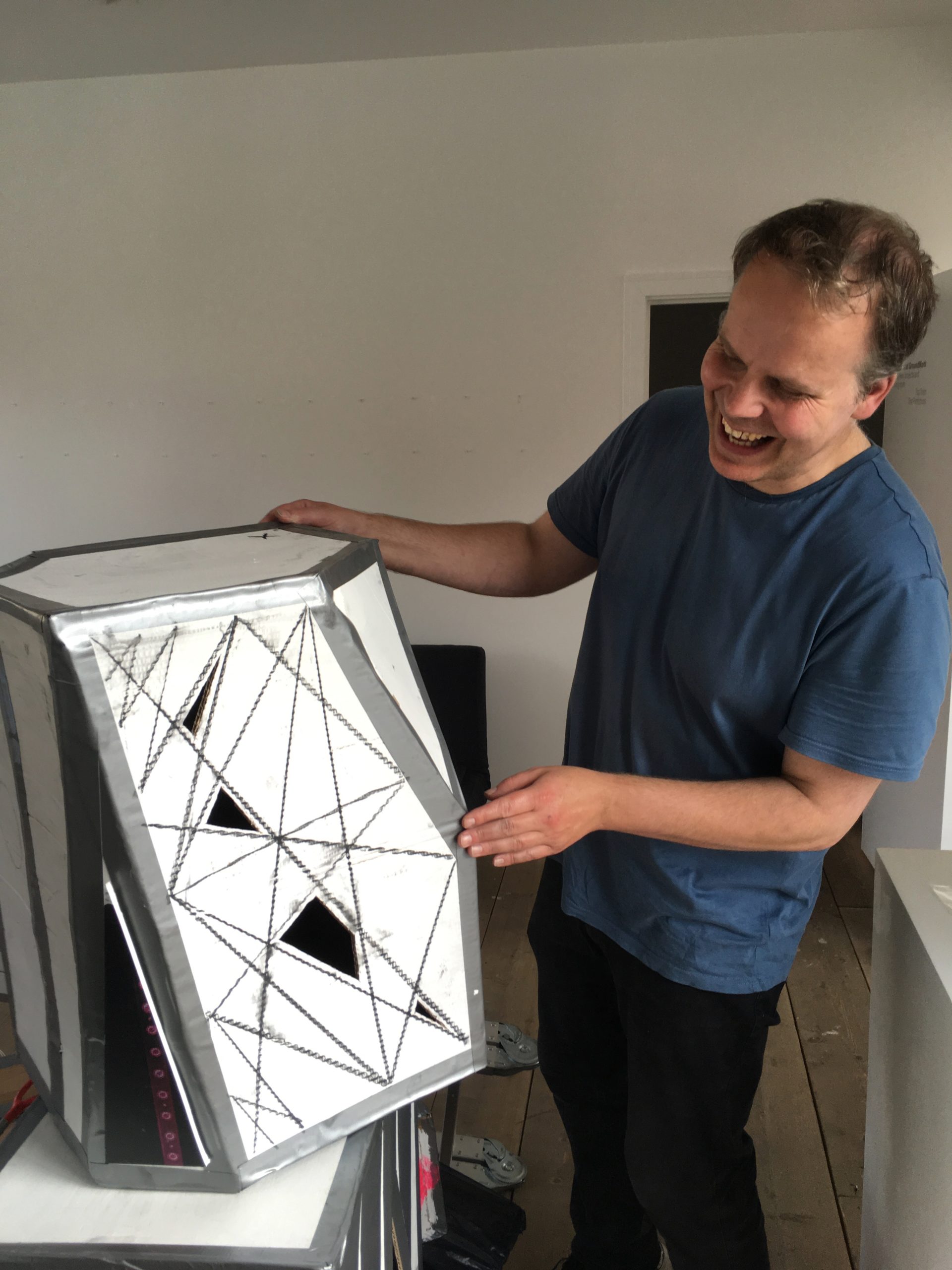
Adam King, who is based in Norwich, worked in residence at the gallery over the summer. He built sculptural constructions and images, structures and scenarios from paper, card and paint. He aimed to create what he described as ‘a brittle, architectural panorama’. Forms reminiscent of high rise buildings fuse allusion to urban space, with the organic and references to the digital. The work asks, ‘How do we make sense of relationships between physical and technological spaces? And where do we see ourselves as part of environments that are increasingly fluid and remote?’
Brief background of the artist
Adam King lives and works in Norwich.
BA Hons Brighton, MA in drawing at Wimbledon, Adam has shown extensively in Europe and had frequent solo shows and residencies since 2002. He won a British Council Travel Award in 2004 and has work in the collections of Charles Saatchi and the World Wildlife Fund, among others.
Antonia Beard
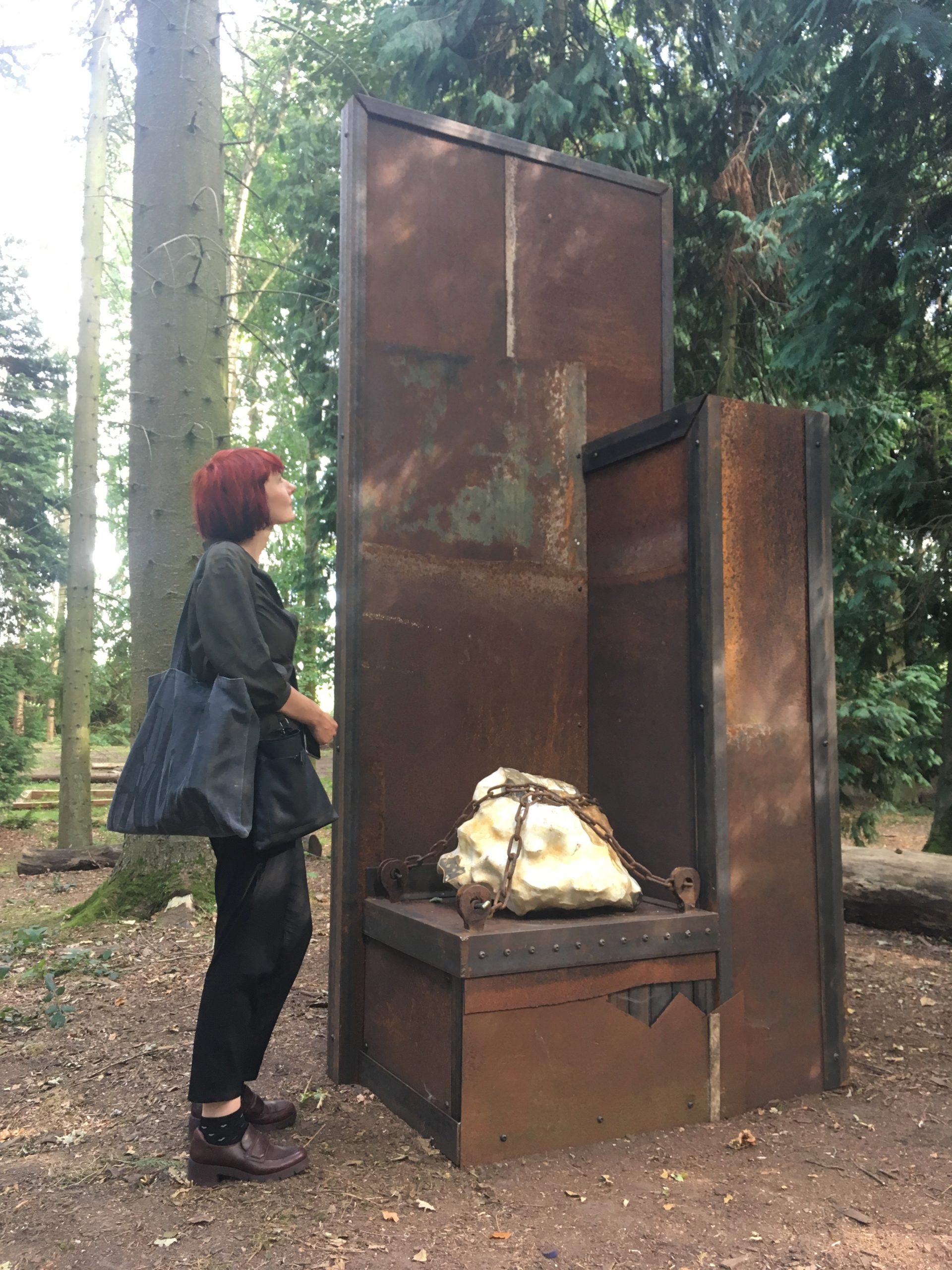
Antonia Beard sees no material as out of bounds for artistic investigation. Moreover, she sees the creative exchange as a valuable opportunity to understand and contemplate the materials we use every day. She recognises that no material is ever just as it seems. Each one links back to a wider cultural and natural history formed out of a series of complex processes.
Antonia likes to work as a site-specific artist, purely with what she finds in each location. She likes to create works that challenge the ideas of place whilst coherently sitting within them. Over the last 3 years, she has been making work at Houghton Festival. The interactions with the local environment inspired her and she made several inventive installations.
Brief background of the artist
Antonia Beard lives and works in London
Studied textile design including in Cambodia at the Institute of Khmer Traditional Textiles. She combines experience and material narratives in her work. She makes site-specific installations, most recently at the Houghton Festival in Norfolk since 2017.
Jayne Ivimey
… because I’m part of this….
Happisburgh, one of the easternmost villages on the east coast of Norfolk, is truly on the edge. It has a repeating history of vulnerability to storm attack. For years, this place was the subject of much controversy as the Government had initially refused to renew its coastal defences. Eventually the government’s Coastal Pathfinder mitigation and engineering programme compensated residents for loss of their cliff-top homes. Then they cleared the beach.
The year 2012 saw the last proud terrace of Victorian houses and modern bungalows demolished. Most of the villagers were rehoused. However, one resident in particular held out against this. Bryony Nierop Reading, a former teacher, had a bungalow at the end of the row. It was just before the steps down to the beach. Jayne Ivimey’s film tells her remarkable story of resilience.
Brief background of the artist
Jayne Ivimey lives and works in Norfolk
Studied Art History at the Sorbonne; Fine Art at Wimbledon College of Art; MA at Norwich University of the Arts. She spent 7 years in bird conservation in New Zealand leading to a strong strand of interest in her work as an artist & she was a key exhibitor at GroundWork in Bird After Bird in 2017. She also has a longstanding passion for the geology, ecosystem and coastal landscapes of East Anglia.
Gordon Senior
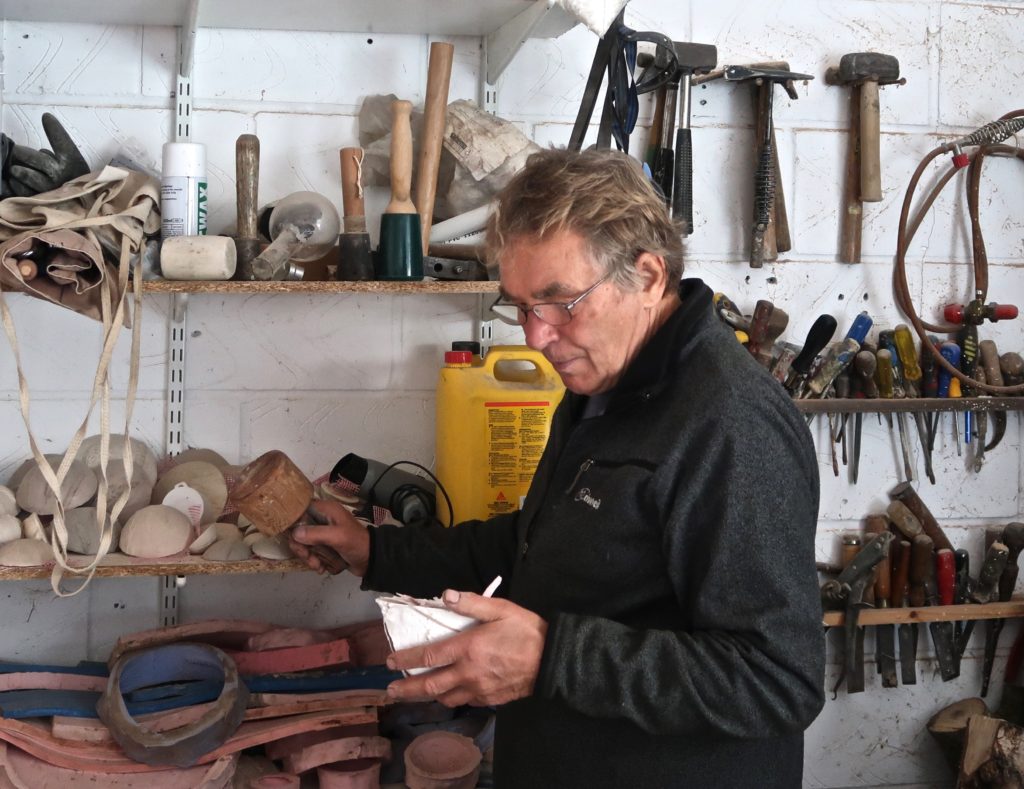
Gordon Senior’s Hand Tools of Unknown Use have different identities. They can be objects with potential, or nonsensical hybrids. They are things at the edge of use and uselessness. He made them from found objects. He deconstructed and re-fashioned them, with a handle of roughly honed sycamore branch. They then became recognisable as a hand tool. He was keen to leave them ambiguous, with their function intentionally unclear.
Are these tools a vision of a post-apocalyptic future when they are essential to farm, function and survive? The artist began to make these in 2002. He has just arrived in the US to become chair and professor of fine art at California State University, Stanislaus. They expressed his confusion of feelings. At the same time he was aware of his new responsibilities, but fearful of them. He began questioning his own abilities to make work and settle in this new country. So he made this beautiful response on the edge of helplessness and resourcefulness.
Brief background of the artist
Gordon Senior lives and works in Norfolk
Formerly Head of Art, Newcastle Polytechnic, Course leader Norwich School of Art and Design; Professor and Chair of Department at California State University, Stanislaus from 2002-17. Tools of Unknown Use were first exhibited in the US in 8 exhibitions between 2005-2017.
Alison Counsell
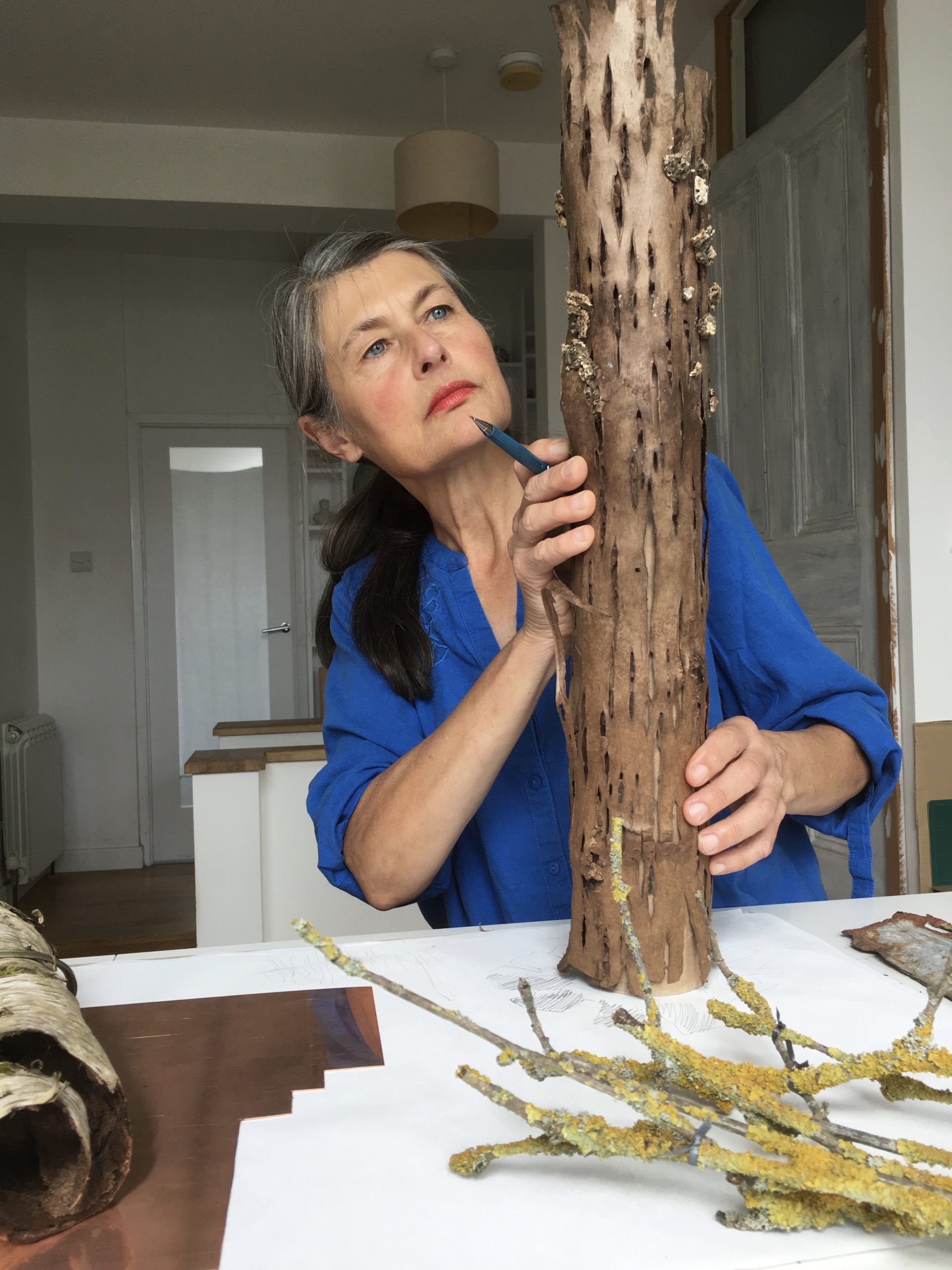
‘On my arrival in Sheffield 30 years ago, the edgelands had penetrated deep into the core of this dying industrial city. Over the following years, I’ve observed this liminal space ever changing. New developments are slowly pushing the edgeland back towards the edge again.’
Edgelands of Sheffield
‘My walking has taken me drifting through the edgelands. The transitional, liminal areas of space to be found on the boundaries of country and city. These places feel transitionary. Scattered with decaying buildings which once had purpose, they now wait for their next incarnation. Not knowing when it will be. Fly-tippers have dumped undesirable goods from elsewhere to here, in the middle of the night. It feels ‘on the edge’, exciting, intriguing, full of narrative, fuel for the imagination. Nature seizes the opportunity to take the place back, plants growing around, over and through anything in their path.’
Edgeland Works is a growing sequence of artefacts. My natural instinctiveness is to create vessel forms – capturing moments in time. These vessels suggest repositories for my walking, intuition, contemplation, curiosity
Brief background of the artist
Alison Counsell lives and works in Sheffield
BA Hons Camberwell; MA metalwork, Royal College of Art; Senior lecturer metalwork & jewellery Sheffield Hallam from 1989-2019. Extensive exhibitions, awards & commissions, globally. Work in public collections include Millennium Gallery Sheffield, Victoria and Albert Museum, Shipley Art Gallery, Nat. Library of Australia.
Fliss Cary
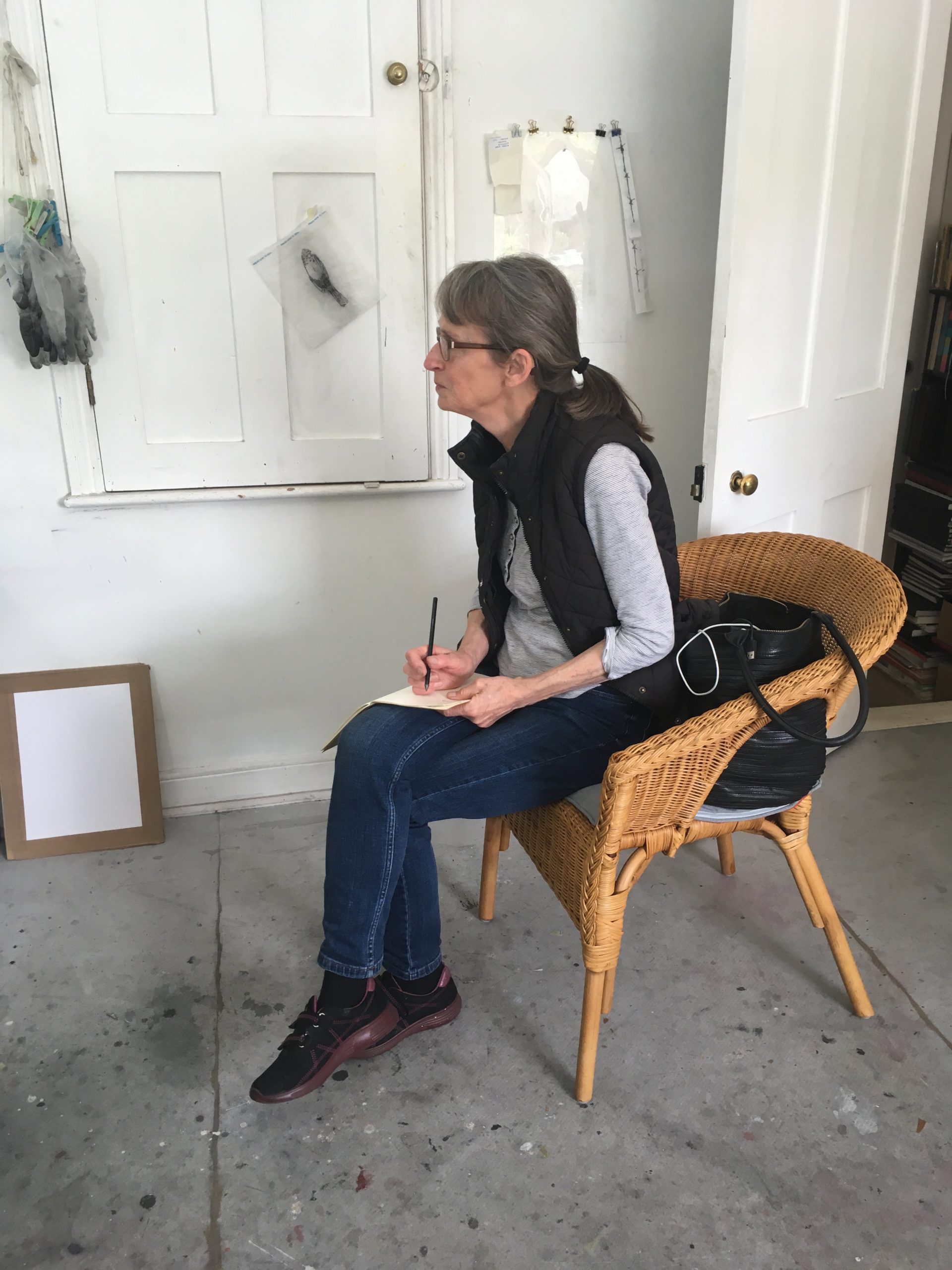
Fliss Cary lives at the western edges of Norwich in a village with a proper central village green. It is however only just beyond the ring-road. On her daily dog-walks, she reflects on the troubling problem of encroachment. The edges of built landscapes intersect aggressively with the country. Alongside the quiet river and the fields with cows, is a power station. A bridge is covered in urban graffiti. There are garages and lock-ups nearby, and the attendant commercial traffic. Factory outbuildings are expanding. They bring cheap industrial style corrugated metal buildings in close proximity to the small brick terraces and cottages. This is the scenery which Fliss reflects upon in her work.
Fliss Cary has recently turned to printmaking, taught by the Paper Works print studio in Lowestoft.
Brief background of the artist
Fliss Cary lives and works in Norwich
BA Hons 1993 & MA 2008, Norwich University of the Arts. Member of the Norwich 20 Group. Her work is inspired by landscape, memory and the decorative Arts. Concentrated on painting and drawing until her newer interest in printmaking, trained in 2018 at Lowestoft Print Studios.
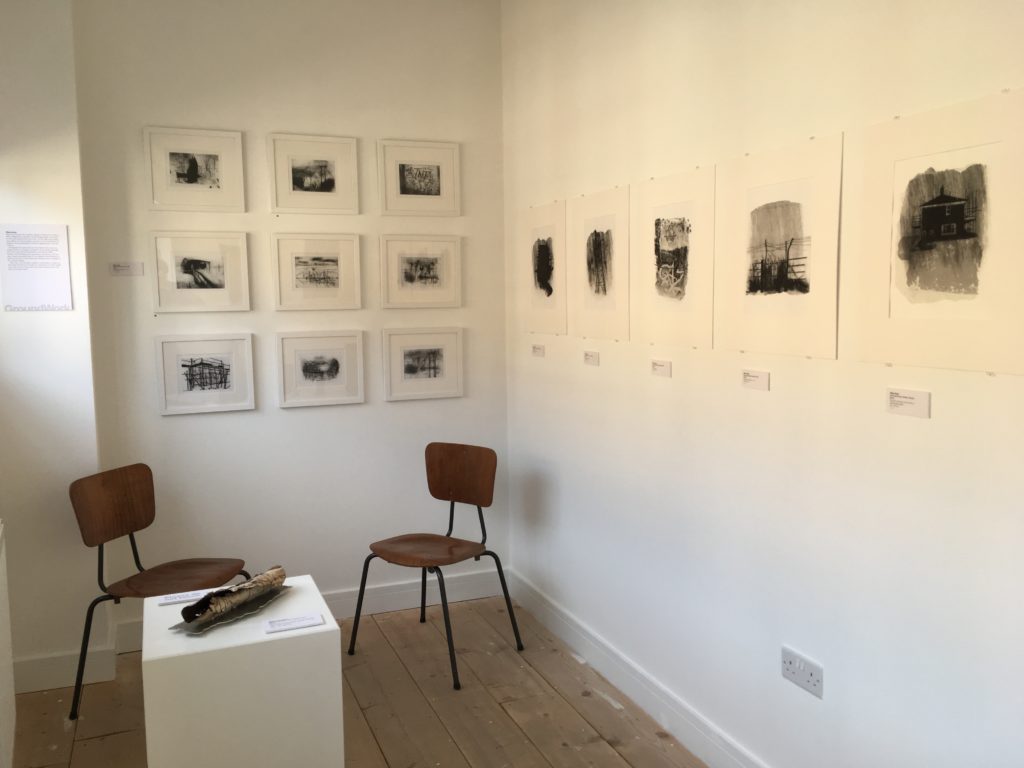
Joanne Soroka
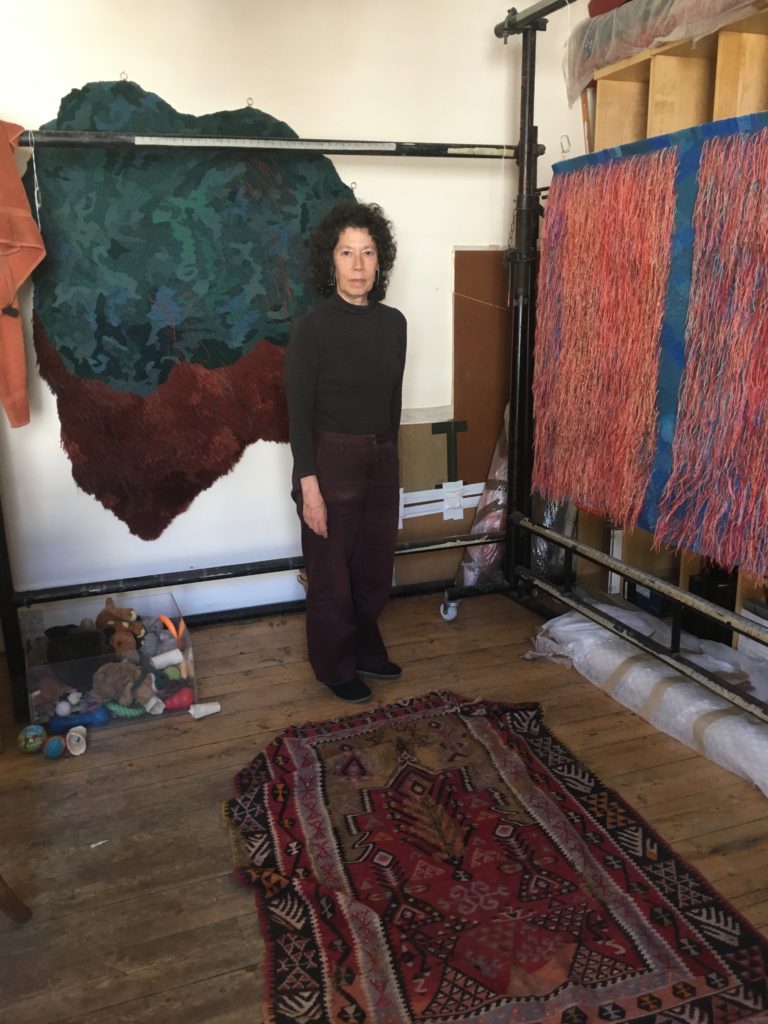
Joanne Soroka is a tapestry weaver and author of a standard textbook on the subject. She contributes work which connects cultural and environmental edges.
‘Migration’
‘Migration’ is map-like, a layered, tufted land-mass, a tapestry in strong colours, about migration, movement, displacement. The contrasting colours and textures in this tapestry suggests movement between two areas, as well as the connections and displacement between them. The rising feeling is about the positive aspects of migration, but there can also be nostalgia for the old life. Joanne herself is culturally hybrid. Her ancestors came from Lithuania, Japan, Ukraine and Scotland and Canada. She migrated from Canada to Edinburgh where she trained in the tapestry department of the University. Later she became artistic director of the famous Dovecote Studios, Edinburgh Tapestry Company.
Often her work responds to the resolution of tension through the soft language of textile. She uses weaving techniques and languages metaphorically, to show how she can in this way harmonise potentially opposing situations.
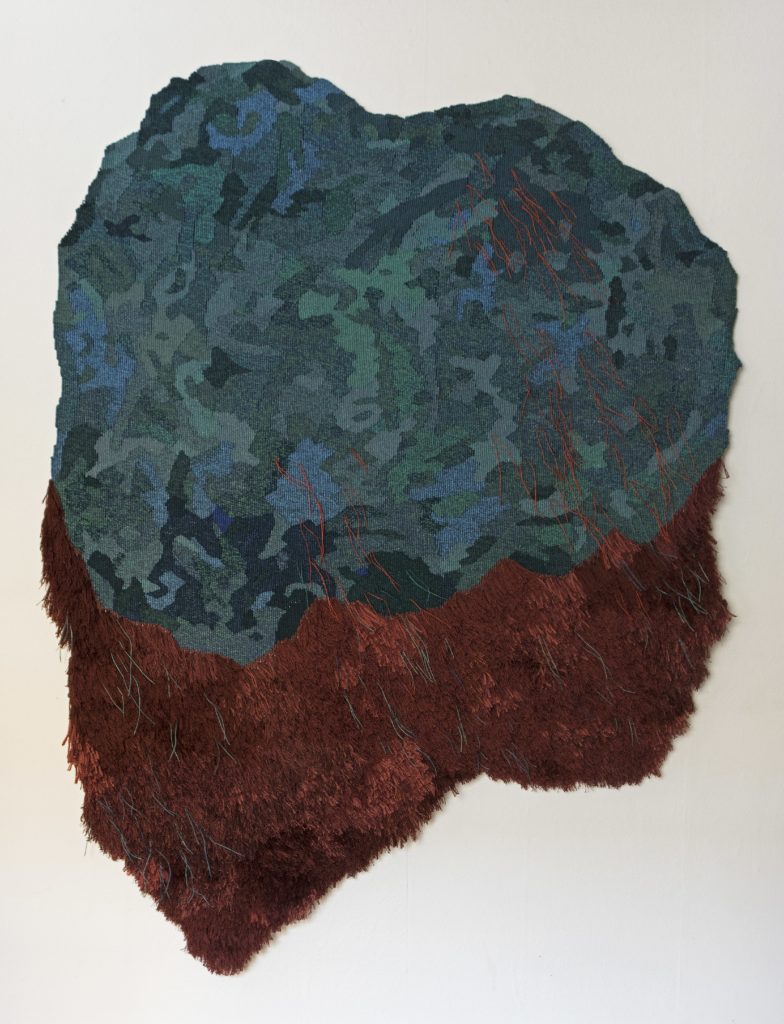
‘Prayer Rug’
Joanne has written about this piece:
I wanted to respond to Islamophobia, one of the great evils of our age. How can a non-Muslim address this subject in a sensitive way? I have owned two threadbare prayer rugs for over forty years, Turkish kelims, woven in the same way tapestries are. Their use for prayer meant that they came to be a symbol of Islam for me. Maybe they could be the start of a work of art on my theme?
I thought about repairing them, metaphorically healing or making reparations to the Muslim community. After many false starts, I remembered the Japanese technique of kintsugi, a way of mending ceramics by using gold to join the broken pieces together. Rather than hiding the fracture, it shows the history of the object, with the breakage undisguised. I decided to use gold linen thread to mend the rugs, rather than trying to do a conventional repair. It would be impossible in any case to restore the rugs to their original state.
Mending to repair Islamophobia
The mending is in an open weave, distinguishing it from the tighter weave of the original rug. I would also not repair every hole or tear, to show that nothing is perfect, as Islamic rugs deliberately never are. I wanted to metaphorically address the fact that much hurt remains. Besides the gold thread, I interwove some of the original colours of the rug, in a ghostly repair of some areas.
Another part of this project is that I am collaborating with the original weavers of the rugs, Muslim women. Although separated by time and distance, we have worked on the same pieces to create something together. The act of weaving itself is about joining and connecting, and repair is about making whole. This becomes a work of art that addresses the issue of Islamophobia by thinking about healing. It also connects with those affected, by standing in solidarity with them.
Joanne Soroka
Brief background of the artist
Joanne Soroka lives and works in Edinburgh
BA McGill University, Canada; Design Diploma Novia Scotia College of Art & Design; Post graduate diploma; tutoring lecturing at Edinburgh College of Art 1976 to date. Artistic Director Dovecote Tapestry Studios 1982-7. Numerous awards, exhibitions (including 11 solo), &commissions globally. Work in public collections includes Scottish Arts Council, Amnesty International Aberdeen Art Gallery, Art museum of Estonia, Tallin and many institutions in Japan, Canada. Author of Tapestry Weaving, Design and Technique, 2011/2018 (Crowood Press)

